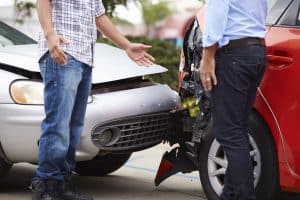Home > Car Insurance > Can My Car Insurance Cover Damage Caused by a Hit-and-Run Incident?
Can My Car Insurance Cover Damage Caused by a Hit-and-Run Incident?
Learn about hit-and-run coverage in car insurance and what you should do if you are in an incident with Savvy's helpful guide.
Author
Savvy Editorial TeamFact checked

Dealing with a hit-and-run incident can be a stressful experience for any driver. Understanding the steps to take and what your car insurance will cover can help you navigate the aftermath of an incident. In this article, we explore how car insurance can cover damages caused by hit-and-run accidents and what you should do if you find yourself in such a situation.
What is a hit-and-run incident in car insurance?
In broad terms, a hit-and-run incident refers to any incident involving a motor vehicle where a driver leaves the scene without exchanging details or ensuring the well-being of others involved. It can also involve someone hitting your parked car and not leaving their information. There are penalties for a hit-and-run accident if every state or territory and you could be charged with a number of offences if you leave the scene of an accident you cause.
What should I do if I’m in a hit-and-run accident?
If you are in a hit-and-run accident, there are several steps you should take in the immediate aftermath:
- Contact the police
- Speak to any witnesses about what they saw and get their contact details
- Take photos of the scene and damage
- Notify your insurer and start the claims process
Are hit-and-run incidents covered by my car insurance?
Whether you are covered by your car insurance for a hit and run depends on your role in the incident and the circumstances.
If you commit a hit and run, your car insurance won’t cover the incident since you are turning an accident into a crime by leaving the scene.
If your car is damaged in a hit and run, you might be covered if you have comprehensive car insurance. However, if you are found to be at fault you may need to pay an excess for your claim, as may be the case if you can’t identify the responsible driver. In this situation, your options may be to:
- Pay for repairs yourself
- Claim on your car insurance and pay the excess – and potentially face higher premiums
If you can track down the culprit, you may be able to:
- Claim on your car insurance without paying the excess or affecting your premium
- Recover costs from the other driver
What if someone hits my parked car?
If your car is hit while parked, the process is much the same as it is for other hit-and-run incidents. If you are unable to collect information from the other driver, you should speak to any bystanders who witnessed the incident, take photos of the scene, contact the police and then contact your insurance provider.
What if I am injured in a hit and run?
If you are hurt in a hit-and-run accident, you will be able to seek compensation even if you cannot identify the driver. Typically, if you are involved in a no-fault accident with another driver, you can make a claim for compensation against their Compulsory Third Party (CTP) insurance. However, in hit-and-run scenarios where the at-fault driver cannot be identified, there is a special government insurance scheme known as the ‘Nominal Defendant Scheme’. This provides financial protection for individuals injured in hit-and-run accidents or accidents caused by unidentified or uninsured drivers, providing compensation injury-related expenses such as:
- Medical and hospital expenses
- Rehabilitation costs
- Loss of income or earning capacity
- Care costs
Helpful guides on car insurance
Disclaimer:
Savvy (ABN 78 660 493 194, ACR 541 339) provides readers with a variety of car insurance policies to compare. Savvy earns a commission from our partnered insurers each time a customer buys a car insurance policy via our website. All purchases are conducted via our partners’ websites. The integrity of our comparison service is unaffected by our partnerships with those businesses and our effort remains to bring further brands that do not already use our comparison service onboard.
Savvy’s comparison service includes selected products from a panel of trusted insurers and does not compare all products in the market. Any advice presented above or on other pages is general in nature and doesn’t consider your personal or business objectives, needs or finances. It’s always important to consider whether advice is suitable for you before purchasing an insurance policy. We always recommend readers to consult the Product Disclosure Statement (PDS) of different policies before purchasing your car insurance.









